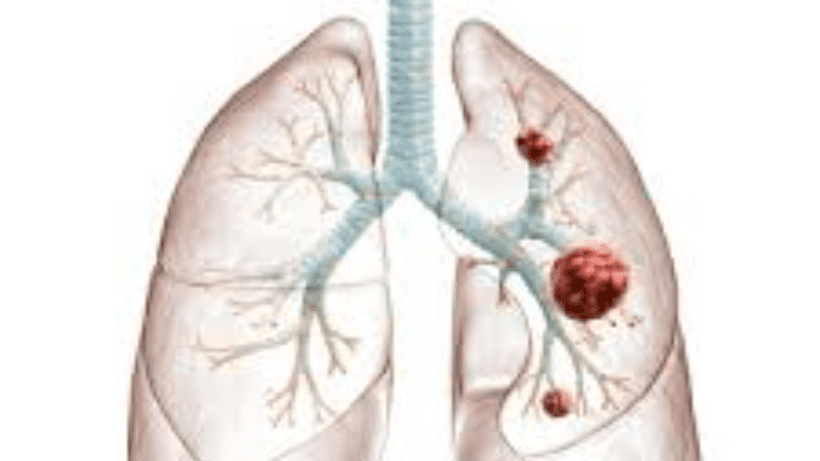
Lung Carcinoid Tumors: Symptoms, Diagnosis, and Treatment
26 Oct, 2023
 Healthtrip Team
Healthtrip TeamIn this blog, we unravel the unique characteristics, symptoms, and diagnostic intricacies of these rare entities, shedding light on their impact and the paths to intervention.
Most popular procedures in India
Lung carcinoid tumors
Lung carcinoid tumors represent a distinct subset of neuroendocrine tumors that arise in the lungs. These tumors are characterized by their relatively rare occurrence compared to other lung malignancies. Unlike more common lung cancers, such as adenocarcinoma or squamous cell carcinoma, carcinoid tumors originate from neuroendocrine cells, which are responsible for producing hormones. This unique origin influences the clinical behavior of lung carcinoid tumors.
Wellness Treatments
Give yourself the time to relax
Lowest Prices Guaranteed!

Lowest Prices Guaranteed!
Carcinoid tumors are classified into two main types: typical and atypical. Typical carcinoids are generally slow-growing and have a more favorable prognosis, while atypical carcinoids exhibit more aggressive behavior. Despite their rarity, lung carcinoid tumors are noteworthy for their potential to cause a range of respiratory symptoms and complications. Understanding their distinct characteristics is crucial for accurate diagnosis and tailored treatment strategies.
Types of Lung carcinoid tumors
A. Typical Carcinoid Tumors
Typical carcinoid tumors are a subtype of lung carcinoids characterized by their relatively indolent nature. These tumors tend to grow slowly and are considered low-grade malignancies. Histologically, typical carcinoids exhibit well-defined, uniform cells with minimal mitotic activity. While they can cause symptoms and complications, their prognosis is generally more favorable compared to atypical carcinoids.
B. Atypical Carcinoid Tumors
Atypical carcinoid tumors are a more aggressive subtype within the spectrum of lung carcinoids. They display increased mitotic activity and cellular atypia compared to typical carcinoids. Despite their higher grade, atypical carcinoids are still considered intermediate-grade malignancies. These tumors may exhibit a more rapid growth rate and a higher likelihood of metastasis, making them a focus of more intensive treatment strategies. Accurate differentiation between typical and atypical carcinoids is crucial for guiding treatment decisions and predicting prognosis.
Symptoms and Signs of Lung carcinoid tumors
1. Coughing:
- Persistent and potentially worsening dry cough.
- Coughing fits may become chronic and exacerbated by airway irritation.
2. Wheezing:
- High-pitched or whistling sounds during breathing.
- Wheezing may result from airway constriction due to the presence of the tumor.
3. Shortness of Breath:
- Gradual onset of breathlessness, particularly during physical activity.
- Progressive shortness of breath as the tumor grows and affects lung function.
4, Chest Pain:
- Dull or sharp pain in the chest area.
- Pain may be localized to the side of the tumor or chest wall.
- Exacerbated by deep breathing or coughing.
5. Hemoptysis (Coughing up Blood):
- Coughing that produces blood-tinged or bloody sputum.
- Indicates potential involvement of blood vessels by the tumor.
6. Recurrent Lung Infections:
- Frequent respiratory infections such as pneumonia or bronchitis.
- Infections may occur due to compromised lung function and impaired mucus clearance.
Causes of Lung carcinoid tumors
A. Genetic Factors
- Inherited Predisposition:
- Some individuals may have a genetic predisposition to develop lung carcinoid tumors.
- Familial syndromes, such as multiple endocrine neoplasia type 1 (MEN1), have been associated with an increased risk.
- Genetic Mutations:
- Mutations in certain genes may contribute to the development of carcinoid tumors.
- Understanding the genetic basis can provide insights into both causation and potential targeted therapies.
B. Environmental Factors
- Smoking:
- While lung carcinoid tumors are less strongly linked to smoking than other lung cancers, there may be an increased risk among smokers.
- The association appears to be more prominent with atypical carcinoids.
- Exposure to Carcinogens:
- Occupational exposure to carcinogens, such as asbestos or radon, may contribute to the development of lung carcinoid tumors.
- Identification of specific environmental triggers is an area of ongoing research.
C. Association with Other Lung Diseases
- Chronic Inflammation:
- Conditions that lead to chronic inflammation in the lungs, such as chronic obstructive pulmonary disease (COPD), may be associated with an increased risk.
- Persistent inflammation could create a microenvironment conducive to tumor development.
- Scarring and Fibrosis:
- Lung diseases causing scarring or fibrosis may create an environment favorable for carcinoid tumor development.
- The association with lung diseases underscores the complexity of the interplay between lung health and tumor formation.
Diagnosis of Lung carcinoid tumors
Imaging Tests
1. Chest X-ray:
Serving as the initial screening tool, chest X-rays capture images of the lungs, identifying potential abnormalities such as masses or nodules. While useful for initial assessment, it may lack detailed information about the tumor's nature.
2. CT Scan (Computed Tomography):
Offering more detailed insights, CT scans use X-rays and computer processing to generate cross-sectional images. This provides a clearer picture of the tumor's location, size, and relationship with surrounding structures, aiding in staging and treatment planning.
B. Bronchoscopy:
Providing direct visualization of the airways, bronchoscopy is a crucial diagnostic tool. It allows for the identification of abnormalities in the bronchial tree, collection of biopsy samples for histological examination, and, when necessary, additional procedures like endobronchial ultrasound (EBUS) for a more precise evaluation.
1. Biopsy:
The cornerstone for confirming malignancy and determining the specific type of tumor. Needle biopsy, involving a thin needle through the chest wall, or surgical biopsy, obtained during surgery, allows for the collection of tissue samples. Histological examination of these samples provides essential information about the tumor's characteristics.
2. Blood Tests:
Assessing specific markers associated with carcinoid tumors. Chromogranin A and serotonin levels are measured, with elevated results suggesting the presence of a carcinoid tumor. While not exclusive to lung carcinoids, these tests contribute to the diagnostic puzzle.
Treatment of Lung carcinoid tumors
A. Surgical Options
- Lobectomy: Surgical removal of the affected lobe of the lung is a primary treatment for localized lung carcinoid tumors, especially when they are smaller in size and confined to a specific area. During a lobectomy, the surgeon removes the entire lobe containing the tumor, aiming to eliminate the cancerous cells while preserving as much lung function as possible. This procedure is often considered for tumors that have not extensively spread beyond a single lobe.
- Pneumonectomy: In cases where the carcinoid tumor is larger or involves a significant portion of the lung, a pneumonectomy may be recommended. This more extensive surgery entails the complete removal of one entire lung. While pneumonectomy is a more aggressive procedure, it may be necessary for tumors located in areas where a lobectomy wouldn't suffice or when the tumor is near critical structures, such as major blood vessels.
B. Other Treatment Modalities
- Radiation Therapy: Radiation therapy employs targeted high-energy rays to destroy cancer cells or impede their ability to grow and divide. This treatment may be used postoperatively to eliminate any remaining cancer cells or as a primary treatment for patients who are not surgical candidates. It can be particularly effective in controlling local disease and preventing recurrence.
- Chemotherapy: Chemotherapy involves the use of powerful drugs to kill or inhibit the growth of cancer cells throughout the body. While lung carcinoid tumors are generally less responsive to chemotherapy compared to other lung cancers, it may be employed in cases of more aggressive or advanced tumors. The choice of chemotherapy agents depends on the specific characteristics of the tumor and the overall health of the patient.
- Somatostatin Analogs: For cases where carcinoid syndrome is a concern, somatostatin analogs such as octreotide or lanreotide may be used. These medications help control symptoms associated with the release of hormones by the tumor. By mimicking the action of somatostatin, a natural hormone that inhibits the release of other hormones, these analogs can alleviate symptoms like flushing, diarrhea, and wheezing associated with carcinoid tumors.
Risk Factors of Lung carcinoid tumors
- Increased incidence in older individuals, with a higher risk observed in middle-aged to elderly populations.
- Smoking, while less strongly associated with lung carcinoids compared to other lung cancers, may still pose an increased risk.
- Presence of carcinoid tumors in close relatives may indicate a genetic predisposition.
- Inherited conditions such as multiple endocrine neoplasia type 1 (MEN1) may elevate the risk of developing lung carcinoid tumors.
Complications of Lung carcinoid tumors
- Carcinoid tumors, particularly atypical ones, may have the potential to spread to other organs, impacting overall prognosis.
- Uncommon, but in certain instances, lung carcinoid tumors can produce hormones leading to symptoms like flushing, diarrhea, and bronchoconstriction.
- Despite successful initial treatment, there is a risk of tumor recurrence, emphasizing the need for vigilant post-treatment monitoring.
Prevention of Lung carcinoid tumors
- Quitting smoking can reduce the risk of developing lung carcinoid tumors, as well as other types of lung cancer.
- Minimizing exposure to potential carcinogens, such as avoiding occupational hazards or environmental pollutants.
- Routine health check-ups and screenings, especially for individuals with known risk factors, contribute to early detection and improved treatment outcomes.
As we conclude this exploration, we hope to foster a deeper understanding of lung carcinoid tumors. Through awareness, recognition, and knowledge, we empower individuals to navigate this less-charted territory of respiratory health with resilience and clarity.
Most popular wellness packages
Related Blogs

How Healthtrip Ensures Quality & Safety in Cancer Treatment Procedures
Detailed guide on cancer treatment, featuring doctors, hospitals, risks, recovery,

End-to-End Logistics for Cancer Treatment with Healthtrip's Support
Detailed guide on cancer treatment, featuring doctors, hospitals, risks, recovery,

Healthtrip's Care Coordinators: Your Support During Cancer Treatment
Detailed guide on cancer treatment, featuring doctors, hospitals, risks, recovery,

Healthtrip's Care Coordinators: Your Support During Cancer Treatment
Detailed guide on cancer treatment, featuring doctors, hospitals, risks, recovery,

Top 5 Indian Hospitals for Cancer Treatment
Detailed guide on cancer treatment, featuring doctors, hospitals, risks, recovery,

Post-Cancer Treatment Diet and Lifestyle Tips
Detailed guide on cancer treatment, featuring doctors, hospitals, risks, recovery,










